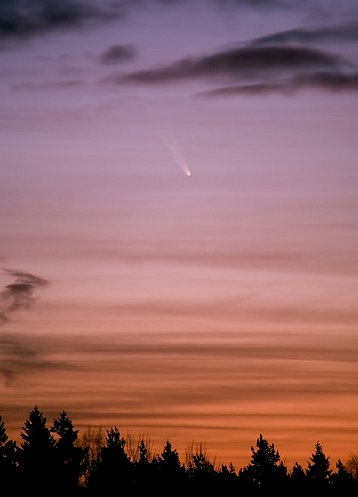 Did you sleep through the auroras of Dec. 14th? Next time get a wake-up call: Spaceweather PHONE.
Did you sleep through the auroras of Dec. 14th? Next time get a wake-up call: Spaceweather PHONE.
METRIC MOON: It's official: The Moon is on the metric system. NASA is returning to the Moon, and the agency has decided that all lunar operations will use metric units. This decision increases our solar system's metric territory by 27 percent: full story.
COMET MCNAUGHT: "When I stepped outside this morning, I stopped short on my doorstep. The morning sky was marvelous," says Andreas D. Skjervold of Boda, Norway. "Comet McNaught was shining almost as brightly as Venus: image."
"It was a morning to remember," agrees P-M Heden who took this picture from Vallentuna, Sweden:

Photo details: Canon Digital Rebel XT, f/5.6, iso 100, 1.5-sec exposure.
"I saw the comet easily with my naked eyes," he adds. "I hope everybody goes outside to see it."
To see Comet McNaught, a clear view of the horizon is essential. In the morning, go outside and face east. The comet emerges just ahead of the rising sun. In the evening, face the other way--west. The comet pops out of the western twilight as soon as the sun sets. Binoculars reveal a pretty, gaseous tail.
Northern observers are favored. The long, dark mornings and evenings of Canada, Scandinavia and Alaska are ideal for viewing this comet so close to the Sun. But the comet has been sighted in other places, too, as far south as Kansas in the United States and Italy in Europe.
Comet McNaught Photo Gallery
[finder charts: morning and evening] [ephemeris] [3D orbit]

